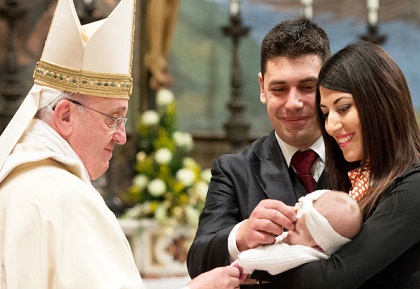 Like most other advanced countries in the postwar era, Germany recorded fewer marriages, more divorces, and smaller families. In 1960 there were 690,000 marriages, compared with 516,000 in 1990. The total for 1993 amounted to only 442,000, but most of this decline was caused by a drop of than more 50 percent in the number of marriages in the new Länder between 1990 and 1993. Until 1990 the decline in marriages in East Germany had been appreciably greater than in West Germany (from 215,000 in 1950 to 137,000 in 1989, compared with 536,000 and 399,000 in the same years in West Germany), but not nearly as steep in the 1990-93 period. Just as the dramatic social changes brought to the new Länder by unification affected birth rates there, so they also affected marriages rates.
Like most other advanced countries in the postwar era, Germany recorded fewer marriages, more divorces, and smaller families. In 1960 there were 690,000 marriages, compared with 516,000 in 1990. The total for 1993 amounted to only 442,000, but most of this decline was caused by a drop of than more 50 percent in the number of marriages in the new Länder between 1990 and 1993. Until 1990 the decline in marriages in East Germany had been appreciably greater than in West Germany (from 215,000 in 1950 to 137,000 in 1989, compared with 536,000 and 399,000 in the same years in West Germany), but not nearly as steep in the 1990-93 period. Just as the dramatic social changes brought to the new Länder by unification affected birth rates there, so they also affected marriages rates.
Another difference in marriage practices between the two Germanys had been that easterners marrying for the first time did so at an earlier age than westerners. Easterners did so, it is believed, because of their desire to have children and hence qualify for low-cost child care and housing benefits. Following unification this difference remained. In 1992 the average age at first marriage was 29.0 for men and 26.5 for women in the old Länder, compared with 27.1 for men and 25.1 for women in the new Länder. Since the mid-1970s, the average age at which people marry has slowly risen for both genders in both parts of Germany.
As the number of marriages declined, the frequency of divorce increased in both states. Between 1960 and 1990, the number of divorces in West Germany more than doubled, increasing from 49,000 to 123,000 and yielding a divorce rate of about 30 percent. Divorce was always more common in East Germany than it was in West Germany. The number of divorces roughly doubled between 1960 and 1988, going from 25,000 to 49,000. In 1986 there was a record divorce rate of 46 percent. Although home to only 20 percent of the total population, the new Länder accounted for 29 percent of all divorces in 1990. After unification, however, the incidence of divorce decreased greatly in the east, perhaps in response to the overall uncertainty and insecurity of future prospects for single mothers in unified Germany. In 1992 the number of divorces in the new Länder amounted to only 10,000. In 1993, however, this number rose to 18,000, an increase of 78 percent.
Despite the increasing likelihood of divorce, in 1990 about 89 percent of all families consisted of married couples, and about 70 percent of those of marriage age were married. In both east and west, however, the failure of these families to produce the necessary number of children for population replacement was striking. Of the 15 million married couples in the former West Germany, about 57 percent had children. Forty-seven percent of couples with children had one child, 38 percent had two children, and 13 percent had three or more children. In 1950 the average number of persons in German households was 3.0. By 1990 this figure had declined to 2.3. In 1991 four-person households accounted for 13 percent of the total number of households, three-person households for 16 percent, two-person households for 31 percent, and single-person households for 35 percent. In the early 1990s, only foreign families were regularly having two or more children, with the Turkish subgroup being the largest in terms of family size.
By the mid-1990s, the newest trend in household formation was what became known as nonmarital living partnerships. Between 1972 and 1990, the number of such households increased sevenfold, to 963,000, or 2.7 percent of all households. Almost 90 percent of these were childless households. Most young people were opting to live together before deciding to marry. This factor pushed the average age at marriage higher.
In the past, when regional differences were acute, convention held that marriages between a Prussian and a Bavarian, between a Catholic and a Protestant, and definitely between a Christian and a Jew were “mixed” marriages. In modern Germany, only unions between Germans and foreigners are considered mixed. Of 516,000 marriages in 1990, about 6 percent were between Germans and foreigners. Most often German women married Americans, Italians, Turks, and Yugoslavs, and German men married Yugoslavs, Poles, Filipinos, and Austrians. In 1974 legislation was passed conferring automatic citizenship on children born of these unions.
Since 1996, children in Germany between the age of three and the age of school entry have been legally entitled to a kindergarten place. In 2013, the right to childcare was extended to children starting from age one. Public childcare is supplied by non-profit providers, mainly organisations of the Protestant or Catholic churches, and the municipalities themselves.
Although prices are not fixed by federal law, parents’ fees are required to vary according to family size and income. Since 2006, working parents have been able to deduct childcare costs of up to 4,000 euros per year from their income taxes. More than 90% of children ages three to five attend some form of childcare, but often on a part-time basis. In 2014, about 75% of these children spent less than seven hours per day in day care.
In the unified German state, a new parental leave system similar to the Swedish model was introduced in 2007. Parents can take leave until the child’s third birthday. Until the child is 14 months old, an earnings substitution is paid, with two months reserved for one of the parents on a “use it or lose it” basis. This arrangement is supposed to encourage fathers to take leave and be more involved in childcare.
Related articles:
Development of the Health Care System in Germany
German Society
Structure of German Society
German Population
Women In German Society
Fertility in Germany
Mortality in Germany
Age-Gender Distribution
Religion in Germany
Population Distribution and Urbanization in Germany
Healthcare in Germany







